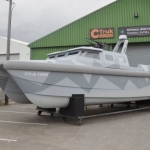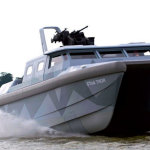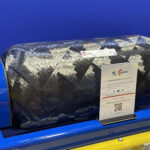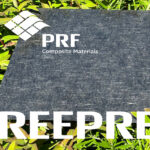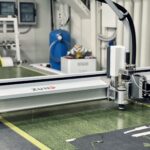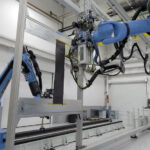UK-based CTruk (Stand S8-298) is utilising its extensive experience in building for the offshore wind support market to develop a series of workboats tailored for the military market.
CTruk has already manufactured nearly 30 composite-built windfarm service vessels, extending up to 22m in length and featuring a patented flexible ‘pod’ system that enables the deckhouse configuration to bechanged in around eight hours. This allows passenger or other specialist pods to be fitted, or the deckhouse moved to free up additional deck space.
CTruk has built a prototype vessel for the military sector in the shape of its 11m Twin Hulled Offshore Raider (THOR) demonstrator craft (above). THOR can be configured for troop transport and assault, fire support, and riverine and coastal patrol; design variants extend from 11m to 19m.
The catamaran hull of THOR will be used as the basis for the new CTruk military workboat line. Built from advanced composite materials, to give a strong and robust structure plus reduced overall vessel weight, the workboat designs are baselined with waterjet propulsors (although other propulsion options are available).
CTruk chief executive Andy White believes the flexible pod concept will be popular with military workboat users who are seeking to get the maximum utilisation out of their craft. The catamaran hullform will also increase the amount of usable deck space.
“Like most users, military customers are looking to get the most value for money out of their investment,” he told the DSEI Daily. “It is no longer economically viable to procure a platform to fulfil one task and our workboats can be reconfigured to serve as a survey vessel on one mission and then be refitted overnight to work as a dive boat the following day.”



